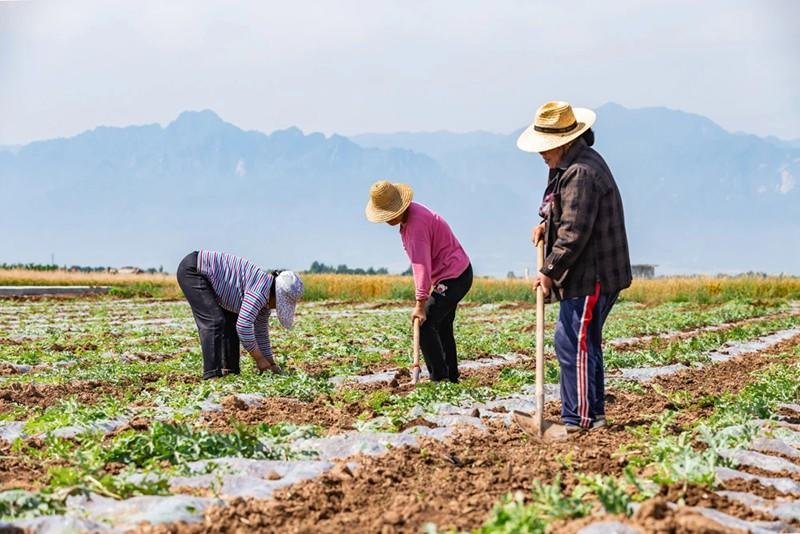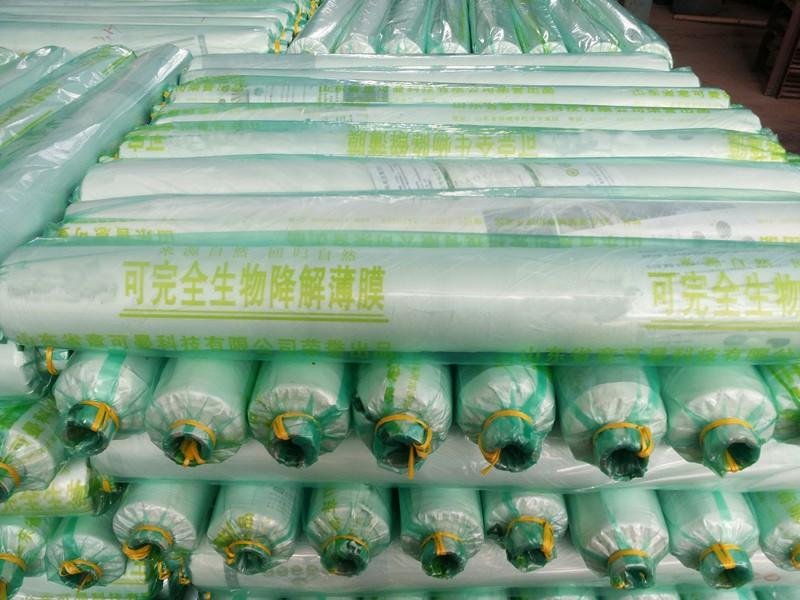
The application of agricultural mulch has brought a revolutionary breakthrough in saving water and improving crop yield. However, a large amount of waste agricultural film is not recycled in time, which not only pollutes the environment, but also poses potential harm to the quality of cultivated land. How about the recycling of waste agricultural film? What problems need to be solved urgently?
Some villagers take the waste shed film and waste plastic film to the local waste agricultural film recycling point for sale. Especially during the autumn harvest, the number of discarded agricultural films has increased significantly. Sending these agricultural films to recycling points can not only earn cash to subsidize households, but also be processed into recycled plastic pellets for recycling.

Agricultural film is an indispensable means of production in agricultural production. In the 1970s, mulching technology was introduced from Japan to China, which brought a “White Revolution” to my country’s agriculture and greatly improved the yield and efficiency of some crops. However, with the rapid popularization of plastic film mulching technology, some plastic film after use has not been recycled in time, becoming white pollution in the field, posing a potential threat to agricultural production.
In recent years, some cities have made great efforts to incorporate the recycling of waste agricultural film into the important content of the local pollution prevention and control battle. By strictly formulating standards and establishing a perfect recycling system to solve the white pollution in the field, the waste agricultural film can be recycled and reused to realize the transformation of waste into treasure.

Agricultural film, including agricultural mulch film and shed film, is widely used in agricultural production because of its functions such as heat preservation, moisturizing, fertilization, and weeding. With the development of modern agriculture, the use of agricultural film in various cities has gradually expanded.
Taking vegetables as an example, about 10 kilograms of agricultural plastic film is needed for one mu of vegetables, which can increase production by more than 30%. Plastic film mulching is an extremely important measure in the process of vegetable cultivation. The use of plastic film in vegetable cultivation can maintain soil temperature and reduce soil evaporation. The use of plastic film technology is particularly important for the water-scarce regions.

So how to deal with the waste agricultural film after use? Before the establishment of the waste agricultural film recycling system, the waste agricultural film can only be incinerated by the farmers themselves. In rural areas, many agricultural films remain in the fields every year.
It is understood that agricultural plastic films are mostly polyethylene light compounds, which are high molecular compounds. Under natural conditions, it takes more than 200 years to degrade. A large number of plastic film fragments remain in the soil, which will lead to changes in the soil structure level and make soil moisture and nutrients. The transportation is hindered, resulting in soil compaction and low seedling emergence rate. Residual film fragments may be mixed with crop straw and feed, and cattle, sheep and other livestock can cause gastrointestinal dysfunction and even death after accidental ingestion. The flying residual film also affects the environmental landscape and causes visual pollution.
In order to solve the problem of pollution caused by discarded agricultural film, agricultural departments in various regions have been actively promoting related work.

The recycled waste agricultural film is actually a renewable resource, which can be turned into treasure after processing.
In the processing workshop of Renewable Resources Co., Ltd., after the waste agricultural film is crushed and cleaned, it becomes recycled plastic particles through hot melting and extrusion. These recycled plastic pellets are black and the size of rice grains. These plastic pellets are all sold to local enterprises in the industrial park to process plastic benches, warning signs and other plastic products, thus turning waste into treasure and forming a complete industrial chain of recycling – processing semi-finished products – finished products – sales – recycling again. Ensure the recycling of waste agricultural film.
In addition to recycling, a new type of plastic film provides a new way to completely solve the white pollution of farmland.

The traditional mulching film raw materials are polyethylene light compounds, which are difficult to degrade under natural conditions, and can only be prevented from remaining by recycling. The fully biodegradable plastic film is completely degraded by soil microorganisms to generate carbon dioxide and water, which can be composted into organic matter. It can be completely degraded into water and carbon dioxide without recycling and cleaning, and the residual film pollution can be completely eradicated. The degradation process and products are not harmful to the soil environment. It is completely degraded by soil microorganisms to generate carbon dioxide and water, which can be composted into organic matter. It can be completely degraded into water and carbon dioxide without recycling and cleaning, and the residual film pollution can be completely eradicated. The degradation process and products are not harmful to the soil environment.
The main fully biodegradable raw materials used in fully biodegradable mulch films are PBAT and PLA, both of which are globally recognized as environmentally friendly fully biodegradable raw materials. PBAT is a thermoplastic biodegradable plastic, which is a copolymer of butylene adipate and butylene terephthalate. It has both the characteristics of PBA and PBT, and has good ductility and elongation at break. Good heat resistance and impact performance; in addition, it also has excellent biodegradability, which is one of the most active and market-applied degradable materials in the current biodegradable plastic research.

This kind of mulch is no different from ordinary mulch in appearance, but it does not have the stretch resistance of plastic products. The plastic film begins to rupture under the action of microorganisms, and a degradation reaction occurs, and the entire plastic film will be completely degraded within a period of 60 to 180 days. The cost of this fully biodegradable mulch film is 120 yuan per mu, which is about 30 yuan higher than the price per mu of ordinary mulch film that meets national standards. This new type of mulch film has a good effect on fruit tree seedling raising. Although the price is about 30% higher than that of ordinary mulch film, it saves the labor cost of picking up mulch film, so it will not increase the burden.

As the state invests funds to support the development of agricultural materials projects, it will strengthen cooperation with agricultural departments across the country in the future, accelerate the application and promotion of fully biodegradable mulch films in various crops, and strive to be the first to achieve the end of farmland “White Pollution” in the near future, in order to help the high-quality development of green agriculture.
Key words: agricultural mulch, recycling of waste agricultural film, shed film and waste plastic film, agricultural film, recycled plastic, White Revolution, be recycled and reused, shed film, agricultural plastic film, pollution, recycled waste, recycled plastic particles, plastic products, traditional mulching film, raw materials, polyethylene, biodegradable plastic film, dioxide and water, be composted, completely degraded, degradation process and products, environment, residual film pollution, PBAT and PLA, biodegradable plastic, PBA and PBT, biodegradable plastic, biodegradable mulch film.






Nice post.